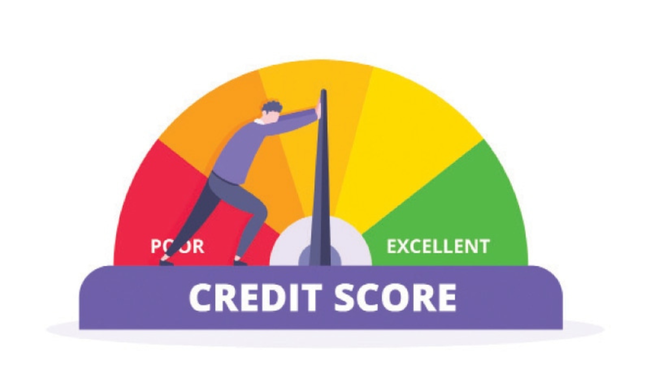Introduction
Pakistan, carved out in 1947 as a new nation from British India, has a unique and evolving financial fabric. With its distinct historical trajectory, socio-political challenges, and aspirations as a developing economy, Pakistan's credit system offers a window into its broader economic realities. This article will delve deep into the intricacies of Pakistan's credit ecosystem, tracing its roots, understanding the modern credit scoring system, and highlighting trends that will shape its future.
Historical Framework
Pakistan's credit system has been heavily influenced by its colonial past, religious values, and economic reforms. From traditional hundis (promissory notes) to digital banking, the system has seen significant shifts.
Colonial Legacy
Like its neighbor India, the roots of Pakistan's formal banking and credit system can be traced back to British colonial rule. This period introduced modern banking practices and institutional credit mechanisms.
Islamic Banking Influence
Given Pakistan's identity as an Islamic republic, the 1980s saw a move towards establishing an Islamic banking system, emphasizing Shariah-compliant financial instruments which avoid interest (Riba).
Historical Facts
Nationalization Era
The 1970s saw the nationalization of banks under the leadership of Prime Minister Zulfikar Ali Bhutto, aiming for better control over financial resources.
Islamic Banking Revolution
In 1980, Pakistan began its transition to an interest-free banking system, a significant shift which influenced its credit landscape.
Digital Evolution
The late 2000s marked a transition towards digital banking and credit facilities, reflecting global trends.
Credit Score - How it works?
In Pakistan, as in many other countries, a credit score is an essential numerical expression derived from an individual's credit history. This score is used by lenders to assess the creditworthiness of an individual before extending a loan or credit facility. The credit score system in Pakistan is maintained and regulated by the Credit Information Bureau (CIB) of the State Bank of Pakistan. Here's a deeper dive into its workings:
Data Collection
The CIB aggregates data from various financial institutions, including banks, microfinance institutions, and leasing companies. This data encompasses details about loans, credit cards, and other financial obligations of individuals and companies.
Scoring Mechanism
Based on the aggregated data, the CIB assigns scores to individuals. This score, typically ranging from 300 to 850, is calculated using factors such as the timely repayment of loans, the number of open accounts, the total levels of debt, and credit history length. A higher score indicates better financial reliability, making it easier for the individual to secure loans at favorable terms.
Score Access
Individuals can request their credit reports from the CIB to understand their financial standing. This transparency ensures that they can take proactive steps if their score is low, such as paying off outstanding debts or ensuring timely payment of future debts.
Implications for Lenders
Financial institutions access these scores to make informed lending decisions. A higher credit score can lead to quicker loan approvals, reduced processing times, and potentially lower interest rates, as it indicates lower risk for the lender.
Regular Updates
Credit scores aren't static. They change over time as financial behaviors evolve. Regular updates ensure that the score reflects the most recent credit behavior of an individual.
Understanding and managing one's credit score is crucial in Pakistan's financial landscape. Not only does it determine access to credit facilities, but it also influences the terms and conditions under which credit is extended.
Advantages
Financial Inclusion
Modern credit systems and microfinance banks have worked towards including marginalized sections of the population.
Islamic Banking
Shariah-compliant banking offers an ethical alternative to traditional banking for the significant Muslim population.
Digital Innovations
Online banking, digital wallets, and fintech solutions are enhancing user experience and efficiency.
Disadvantages
Limited Outreach
Despite advancements, a significant portion of Pakistan's population remains unbanked, relying on informal credit systems.
Over-reliance on Collateral-based Lending
Traditional banks often require tangible assets as collateral, limiting access for many.
Economic Challenges
Political instability and economic challenges can sometimes deter foreign investment and affect the overall health of the credit system.
Trends and Patterns
Rise of Fintech
Digital lending platforms and fintech startups are gaining traction, offering innovative credit solutions.
Microfinance Growth
With the success of institutions like Tameer Bank, microfinance has witnessed substantial growth.
Consumer Awareness
With digitalization, there's an increasing awareness about credit scores and financial management among the general public.
Tips
Monitor Credit Score
Regularly check and understand your credit score, ensuring financial behaviors align with maintaining a healthy score.
Educate on Islamic Banking
Understanding the principles of Shariah-compliant banking can help in making informed credit decisions.
Avoid Over-borrowing
Borrow based on needs and repayment capacity to avoid falling into debt traps.
Curiosities
Rosca Systems
A traditional rotating credit system known as Committees still exists where members contribute an amount and rotate the lump sum among them.
Branchless Banking
With services like Easypaisa and JazzCash, Pakistan is experiencing a boom in branchless banking, revolutionizing access to financial services.
Conclusion
Pakistan's credit system is a reflection of its evolving identity, shaped by historical shifts, religious values, and the relentless march of technology. As the nation grapples with its economic challenges and opportunities, its credit landscape stands as a testament to resilience, innovation, and the undying spirit of progress. For investors, consumers, and observers alike, understanding this system provides key insights into the pulse of Pakistan's economic heartbeat.

